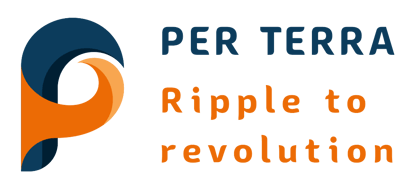Bridging the Gap or Deepening the Divide? Why India’s Foundational Learning Efforts Must Align with School Curricula
Millions of children in India attend school but still struggle with basic reading and maths — especially in rural and marginalised communities. Many programmes try to close these gaps, but their impact often fades. Why? Because they operate outside the formal school curriculum. This piece explores why curriculum alignment isn’t just helpful — it’s essential for making foundational learning truly effective and lasting. 📖 Read the full article below and join the conversation on reimagining support for India’s learners.
4/8/20254 min read


Across India’s vast and varied education landscape, a quiet crisis has simmered for years — one that cuts across states, languages, and types of schools. It’s not about enrolment anymore; it’s about learning. Millions of children attend school every day, but far too many are not mastering even the basics. The Annual Status of Education Report (ASER) 2024 once again laid bare the scale of the problem: barely half of all children in Grade 5 can read a Grade 2-level text, and fewer than one in three can solve a basic division problem. These numbers have remained stubbornly low across multiple years, pointing not to a temporary glitch but a systemic challenge. The learning gaps are particularly stark in rural areas, in government schools, and among children from marginalised communities, where the lack of access to resources, language support, and personalised attention compounds the problem. Despite national initiatives like the NEP 2020 and the launch of the NIPUN Bharat Mission to ensure foundational literacy and numeracy, large sections of children continue to lag several years behind their grade level. What we face, then, is not just a learning gap — but a learning emergency that demands urgent and systemic response.
The Problem with Parallel Tracks
To respond to this crisis, India has seen a proliferation of foundational learning initiatives — often operating through community centres, NGOs, and school-based remedial classes. These efforts typically rely on simplified, standardised resources designed to help children quickly build basic reading and arithmetic skills, regardless of their current grade. And in many cases, they show quick wins: children who were previously unable to identify letters or count confidently begin to engage, respond, and show visible signs of improvement.
But these interventions often run parallel to the formal school system, not with it. They teach skills, yes — but not always the right ones. When foundational learning support is not aligned with what children are expected to learn in their classrooms, the result can be a fragmented educational experience. Children shuttle between two distinct learning worlds: one focused on remedial basics and another demanding mastery of grade-level textbooks, concepts, and examinations. The bridge between the two remains worryingly thin.
Why Curriculum Alignment is Non-Negotiable
India’s education system is highly curriculum-driven. From textbooks and lesson plans to assessments and board exams, the school journey is mapped out in detail. For any learning intervention to be sustainable, it must plug directly into this framework — not orbit around it.
1. One Child, One Learning Journey
Children don’t separate their learning experiences into compartments. What they absorb in a community session should ideally support what they encounter in school the next day. When both tracks use consistent methods, language, and content, learning becomes reinforcing rather than confusing. Research has shown that programmatic coherence — where support systems and formal education align — leads to significantly better outcomes in comprehension, retention, and confidence.
2. Respecting the Curriculum Ladder
India’s school curricula are structured as a stepwise progression of concepts — a learning ladder. Without careful alignment, support materials can inadvertently repeat lower-level concepts for too long or skip essential intermediate steps. A Grade 5 child who is still doing Grade 2-level work may be improving, but unless there’s a clear plan to catch up to the Grade 5 syllabus, that progress risks stalling. Educational research refers to these stepwise frameworks as learning progressions, and they are essential for bridging early gaps without creating new ones.
3. Measuring Progress That Matters
Learning support programmes often track their own internal progress — how many letters a child can now identify, or how many sums they can solve. But these metrics mean little unless they are mapped to grade-level expectations. When assessments are aligned with the school curriculum, educators gain real insight into whether a child is truly catching up with their peers. Without that link, improvements may be celebrated within the programme, but remain invisible — and irrelevant — in the school context.
4. Preparing Children for the Exam Reality
No matter how progressive we want education to be, assessments remain high-stakes in India. Students are judged on their performance in tests aligned to their textbooks and syllabi. If supplementary learning does not prepare them to engage with these assessments — in format, content, or complexity — children may falter. Worse, they may feel that despite extra effort, they are still failing, leading to loss of confidence and eventual disengagement. Skills must be transferable — and transfer tested, not just taught.
5. Sustaining Self-Belief
Confidence is one of the most precious outcomes of any educational intervention. When children start to succeed — raise their hands, answer questions, get praise — their belief in their ability to learn is rekindled. But that belief must translate into success within the formal school setting. If a child performs well in a learning centre but continues to fail school tests, the dissonance can erode rather than reinforce motivation. Alignment ensures that learning gains translate into real academic mobility — and with it, a more lasting sense of self-efficacy.
Toward a Smarter, Integrated Approach
What India needs now is not just more foundational learning initiatives, but smarter ones — integrated, curriculum-aware, and purposefully designed to link remediation with progression.
This means:
Developing grade-wise aligned materials, not just generic learning resources.
Training community educators to understand and use state curriculum frameworks.
Using flexible grouping for remediation, while setting clear pathways back to grade-level proficiency.
Tying support activities to classroom content, so students can make immediate use of what they’ve learned.
Engaging schools and teachers, rather than working in silos, to ensure local curriculum relevance.
Conclusion: Beyond the Patchwork
India’s effort to strengthen foundational learning is both urgent and commendable. But for it to translate into long-term educational equity, we must go beyond patchwork solutions. Supplementary learning cannot remain a parallel track. It must become a reinforcing strand of the main journey — helping children not only catch up but stay on track.
The success of foundational learning lies not just in helping a child read or count — but in enabling them to do so within the system they are a part of. When that system and its supports work in concert, learning becomes not just possible, but inevitable.
References
ASER Centre. (2024). Annual Status of Education Report (Rural) 2024. New Delhi: Pratham.
National Council of Educational Research and Training (NCERT). (2020). National Education Policy 2020.
Ministry of Education, Government of India. (2021). NIPUN Bharat Mission Guidelines.
Newmann, F. M., Smith, B., Allensworth, E., & Bryk, A. S. (2001). Instructional program coherence: What it is and why it should guide school improvement. Educational Evaluation and Policy Analysis, 23(4), 297–321.
Daro, P., Mosher, F. A., & Corcoran, T. B. (2011). Learning trajectories in mathematics: A foundation for standards, curriculum, assessment, and instruction. CPRE.
Sweller, J. (1988). Cognitive load during problem solving: Effects on learning. Cognitive Science, 12(2), 257–285.
Perkins, D. N., & Salomon, G. (1992). Transfer of learning. In International Encyclopedia of Education (2nd ed., Vol. 11). Pergamon Press.
Bandura, A. (1997). Self-efficacy: The exercise of control. W.H. Freeman.


© 2025 Per Terra Consulting LLP, an Indian Limited Liability Partnership. All rights reserved.
